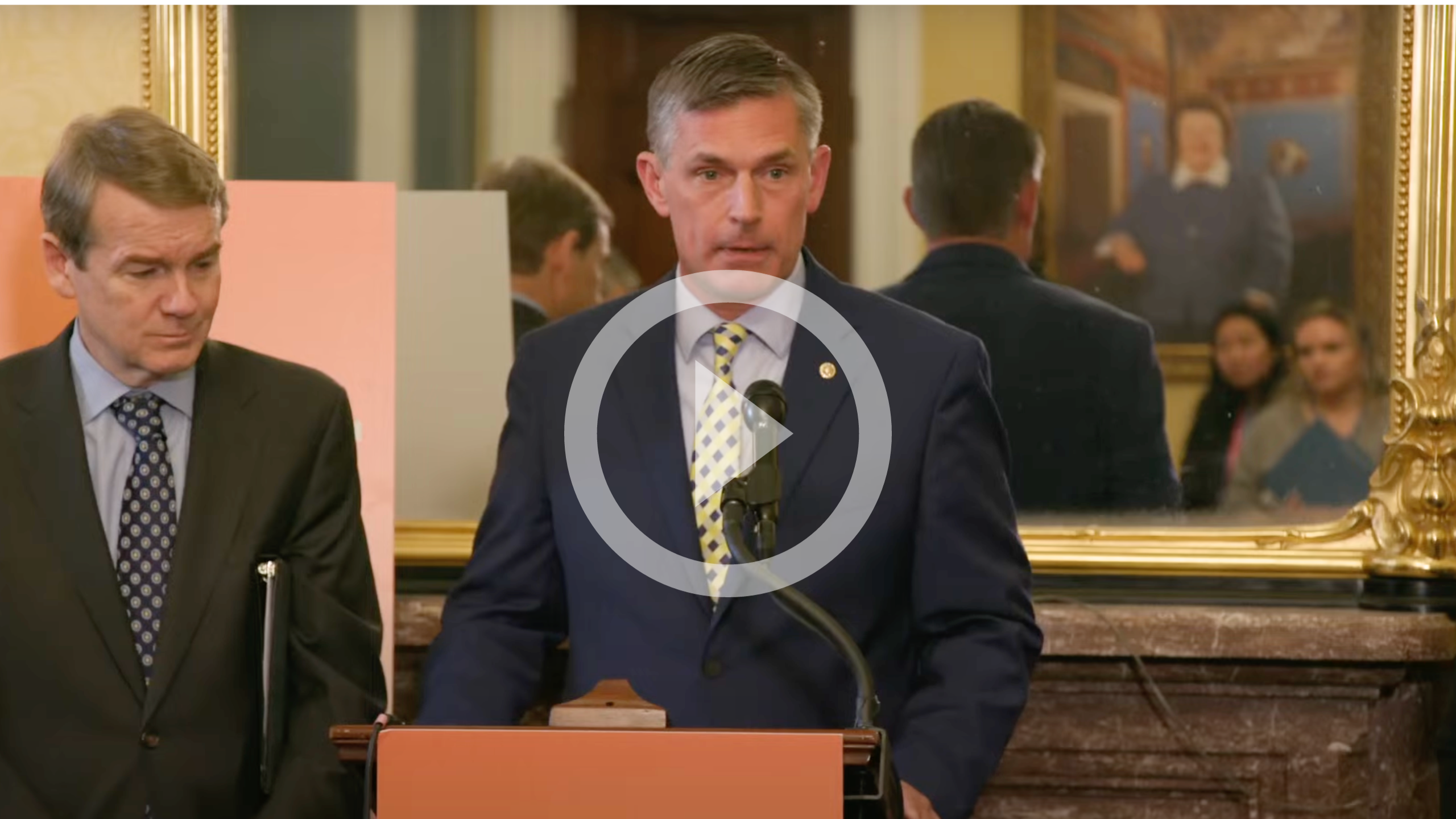VIDEO: Heinrich Hosts Press Conference to Discuss Newly Introduced Gun Legislation
WASHINGTON – Today, in the U.S. Capitol, U.S. Senator Martin Heinrich (D-N.M.) led a press conference to discuss his newly introduced legislation, the Gas-Operated Semi-Automatic Firearms Exclusion Act (GOSAFE) Act. The GOSAFE Act is new, pragmatic legislation designed to protect communities from gun violence by regulating firearms based on the lethality of their internal mechanisms, as opposed to focusing on cosmetic features that manufacturers can easily modify.
Heinrich was joined by U.S. Senators Mark Kelly (D-Ariz.) and Michael Bennet (D-Colo.), along with Co-President of New Mexicans to Prevent Gun Violence Miranda Viscoli, Executive Director of Moms Demand Action Angela Ferrell-Zabala, and Gun Violence Survivor & Activist Aalayah Eastmond.
CAPTION: U.S. Senator Martin Heinrich (D-N.M.) leads a press conference with GOSAFE Act co-sponsors Senators Mark Kelly (D-Ariz.) and Michael Bennet (D-Colo).
The GOSAFE Act has the backing of leading gun-safety organizations including Everytown for Gun Safety; Giffords; Brady: United Against Gun Violence; March Fourth; March for our Lives; Sandy Hook Promise; and New Mexicans to Prevent Gun Violence.
In New Mexico, the GOSAFE Act is also supported by Kim Stewart, Sheriff, Doña Ana County Sheriff’s Department; Harold Medina, Chief of Police, Albuquerque Police Department; Elisa Bequeria, Superintendent, Lake Arthur Schools; New Mexico Coalition Against Domestic Violence; Rio Grande Alcohol Treatment Program; New Mexico Voices for Children; Patrick Nolan, School Board Member, Las Cruces Public Schools; and Taos Alive.
More information on the GOSAFE Act, including bill text, a fact sheet, section-by-section, and more, can be found here.
Heinrich's remarks as delivered are below:
On a Monday morning in May, an 18-year-old high school student walked onto a neighborhood street in my state, in Farmington, New Mexico.
He was wearing a modified bulletproof vest and was heavily armed, with multiple pistols and an AR-15 style semi-automatic, gas-operated rifle.
Starting at 10:56 a.m., he began firing at nearby homes and passing vehicles.
Law enforcement responded to the scene within minutes, engaged the shooter, and ultimately killed him by around 11:05.
In that brief 10 minutes of time, the shooter fired off 150 rounds, hit at least seven homes, and eleven vehicles.
He killed a 97-year-old woman, Gwendolyn Schofield.
He also killed her 73-year-old daughter, Melody Ivie, and 79-year-old Shirley Voita.
He also injured six other people, including two law enforcement officers were responding.
In 2023, our nation has experienced roughly two mass shootings a day.
Let that sink in for a moment.
Each of these shootings has had a devastating impact on an American community and the families of the victims involved.
It is difficult to even believe that next week will mark eleven years since we lost 20 schoolchildren and 6 staff members at Sandy Hook Elementary School.
From Aztec and Farmington, New Mexico to Las Vegas, Nevada, Parkland, Pittsburgh, Aurora, Uvalde and most recently Lewiston, the number of Americans killed in mass shootings has been horrific.
We can’t bring those Americans back.
But we can pass commonsense gun safety measures that can save lives and spare at least some American families from this unimaginable loss.
My Gas-Operated Semi-Automatic Firearms Exclusion—or GOSAFE—Act would regulate the most inherently dangerous and unusual firearms and mechanisms that mass shooters have wielded time and again against our communities.
My GOSAFE Act draws a bright line between traditional firearms used for hunting, sporting, and self-defense and the weapons so common in these mass shootings.
I first started working on this legislation back in 2017 after the Las Vegas mass shooting.
I believed it was important for me to be part of a solution both as a gun owner and as an engineer who was familiar—let’s face it, I’ve shot many of these weapons—familiar with the physical mechanics that make some firearms so inherently dangerous and destructive.
I focused on those mechanics rather than on cosmetic features that individuals or even manufacturers can quickly modify.
These mechanisms are what allow civilian mass shooters to walk into public spaces, destroy human life at an incredible pace, and sometimes even outgun law enforcement.
That includes:
- The gas-operated actions that make AR-15s so dangerous.
- Detachable, high-capacity magazines,
- Self-manufactured “ghost guns,”
- And conversion devices like Glock switches and bump stocks.
Like a lot of Americans—and many of my constituents in New Mexico—I am a gun owner, and I have been for most of my life.
Many of my best memories involve the responsible, law-abiding use of firearms to fill my freezer and feed my friends and family.
But I also firmly believe that our families and children should feel safe when they go to their local bowling alley, enter their classroom, or go to a place of worship.
And I have seen firsthand the impact that lockdowns and endless active shooter drills have on our kids.
As lawmakers, we should be able to draw a line between the traditional firearms used for hunting, sport, and self-defense and these weapons of war, designed to take human life.
We should heed the calls of the young Americans, and their parents, who have demanded that Congress take meaningful action to save lives.
These folks have not given up on Congress.
And we in Congress have a duty.
I refuse to believe that we can’t find a meaningful path forward—and one that is constitutional—to reduce gun violence.
t’s why, last year, after the painful tragedy in Uvalde, I was proud to play a leading role in negotiating the Bipartisan Safer Communities Act.
I was particularly proud to partner with my Republican colleagues to secure two key provisions that made firearm trafficking and straw purchases criminal offenses punishable by up to 15 years in prison.
We proved that it’s possible to find some agreement on measures that help protect our communities from gun violence while simultaneously safeguarding the Second Amendment.
But we need to do more.
We need to take on the dangerous firearms and the mechanisms that are fueling our nation’s skyrocketing rise in mass shootings.
